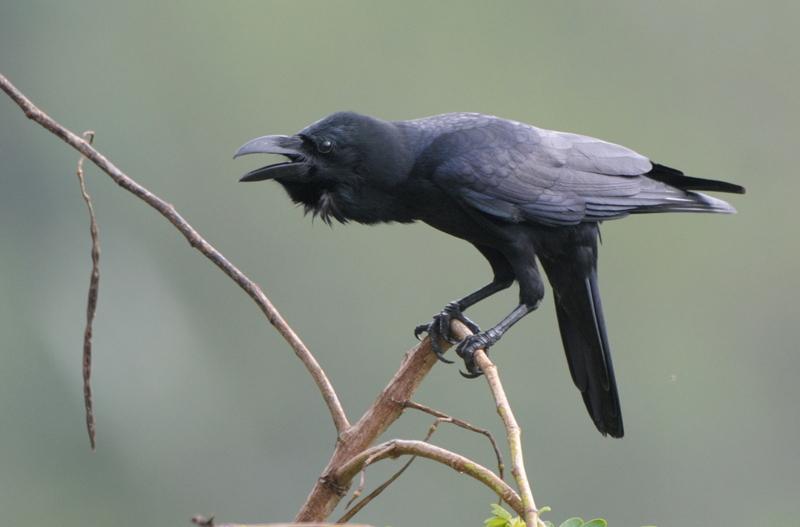Corvid Vocalizations
Biology 342 Fall 2015
Nathaniel Klein and Sophia McKean
Corvid Vocalization Behavior

Large-billed Crow (Corvus macrorhynchus) cortesy of Tadeusz Stawarczyk, IBC294733.
What is a Corvid?
Corvidae is a genus of birds that includes crows, ravens, jays, rooks, jackdaws, magpies, treepies, nutcrackers, and choughs. They are usually medium to large, highly social birds. To learn more about corvid species, and see pictures and videos, click here.
What are Timbergens' questions, and why are they important?
They are four questions that are helpfull to ask when examining the behavior of an organism. They ask how a behavior is performed (mechanism), what the adaptive value of the behavior is (lifetime reproductive fitness), how the behavior came about through evolution (phylogeny), and how the behavior has changed throughout the organism's life (ontogeny) (Timbergen 2005). Corvid vocalizations are very complicated behaviors, so approaching vocalization from four different angles can allow a deeper exploration of multiple questions about that behavior. When these questions are then considered together, it will ultimately increase our understanding of the behavior as a whole.
Why are corvid vocalizations interesting?
Corvids are often very intelligent animals that are capable of learning and performing complicated tasks. They are also known to be vocal learning birds, which is important because they are often very social animals. Their intelligence and especially their communication behaviors have enabled them to be very successful and widespread family of species that are found almost everywhere in the world except the Northern and Southern polar regions.